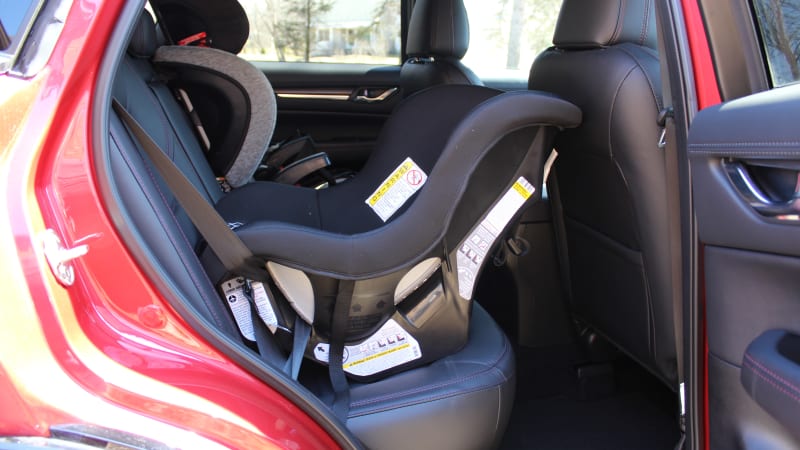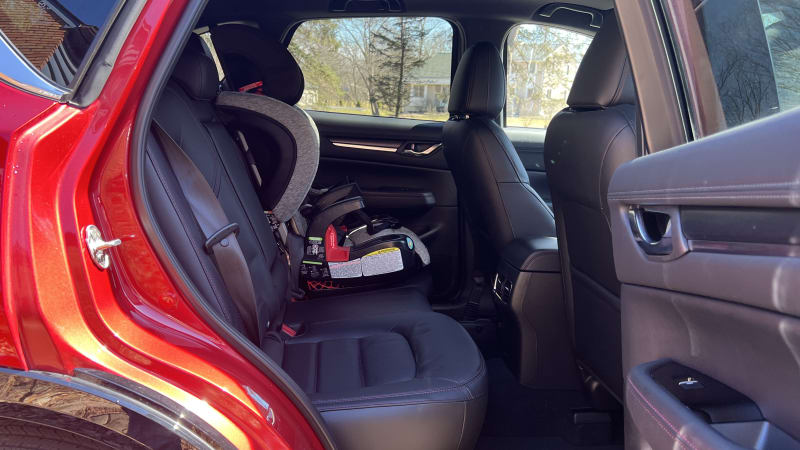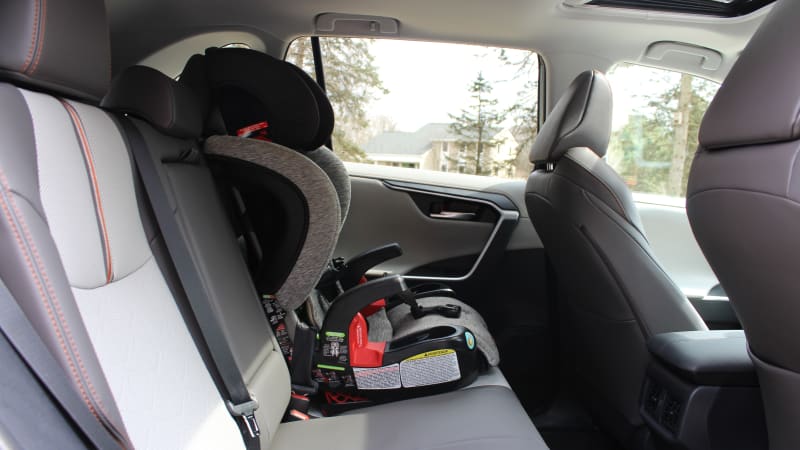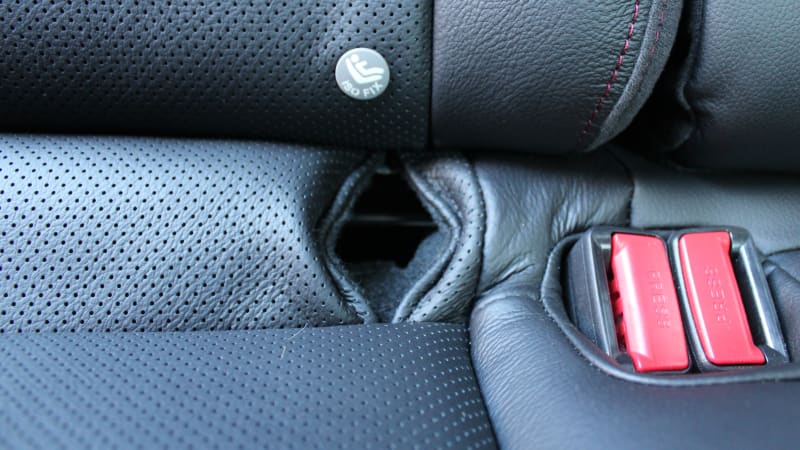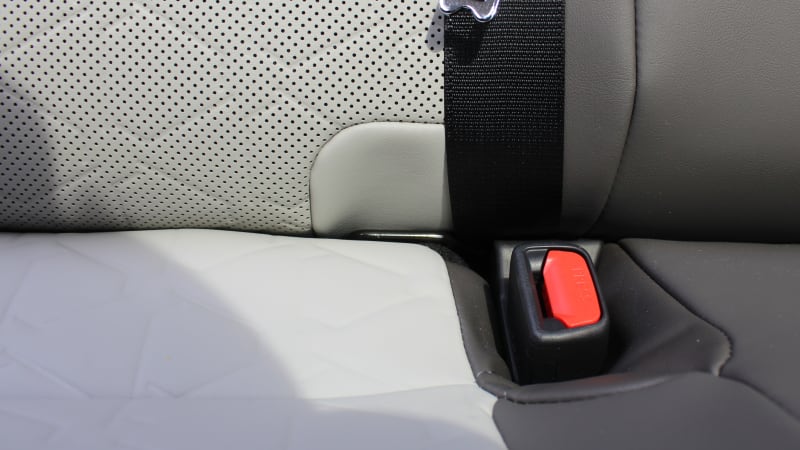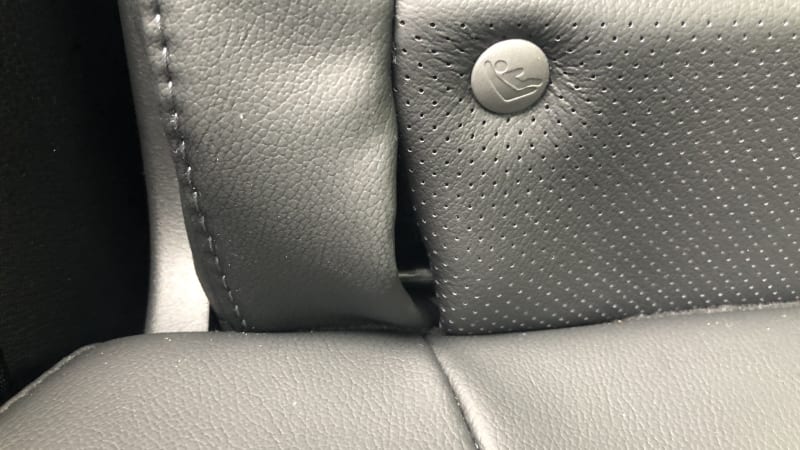Car seat test | Mazda CX-5 vs. Toyota RAV4 vs. Subaru Forester vs. Honda CR-V
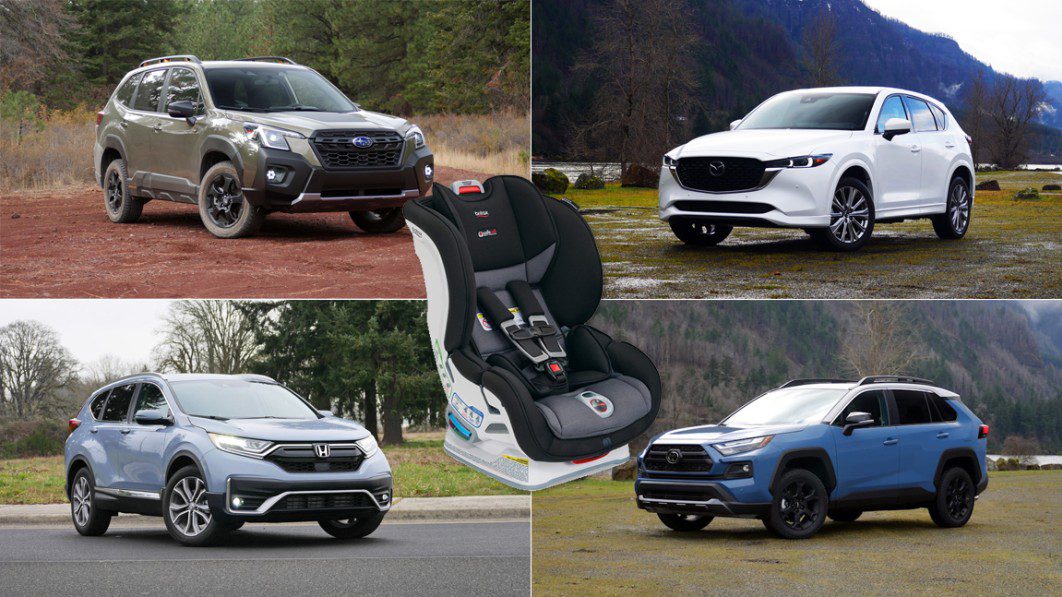
Awhile back, I wrote up a child car seat test comparing the Subaru Forester with the Honda CR-V Hybrid. In that test, I still only had one child, and thus one car seat. Though both cars fared well in the test, I found the CR-V to have a slight edge over the Forester, mostly because I liked its ability to hide the lower anchors in a more visually appealing way without sacrificing accessibility. But that was also before I noticed an oddity about the center top tether in the Honda (more on that in a bit).
Now, however, I have two kids. My now 6-year-old son, Wollie, still uses a forward-facing Britax high-back booster seat. My 1.5-year-old daughter, Lola, however, rides in a rear-facing child seat. While smaller and lighter — and thus easier to maneuver through an open car door — it takes up more fore/aft space in the row. Recently, I also had back-to-back loans of two direct competitors to the vehicles I compared in the first test. As such, it seemed appropriate to perform a comparison of the Mazda CX-5 and Toyota RAV4, while keeping in mind some of the lessons learned when testing the Honda CR-V and Subaru Forester.
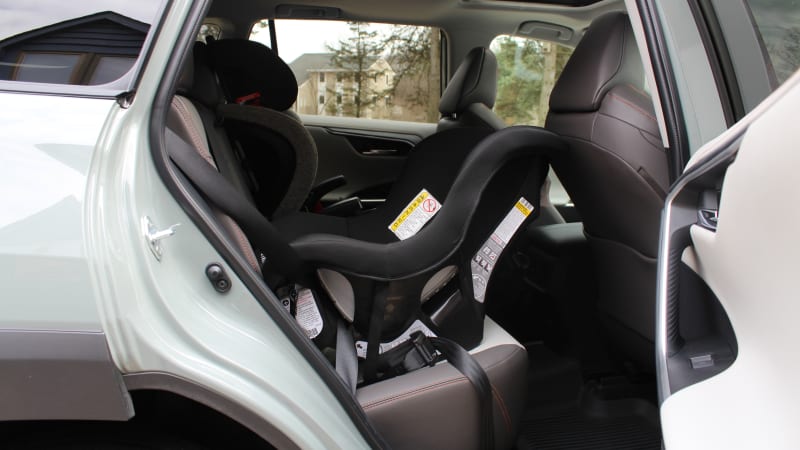
In both the CX-5 and RAV4, putting Lola behind me would mean I’d had to move the driver’s seat forward more than I’d like, so I simply put the front-facing chair behind me, and put the rear-facing seat behind the usually empty passenger seat. Interestingly enough, though the RAV4’s rear seating area is actually smaller, and thus my son’s face was closer to my shoulders, he enjoyed similar legroom in each vehicle. The front seatbacks in the Toyota have a sharp inward curve that carves out what extra space it can for an adult’s needs — or a child’s dangling legs.

On the passenger side in front of the rear-facing seat, the Mazda had the advantage over the Toyota. The top of that car seat lines up with the top of the seatback, where it couldn’t take advantage of the RAV4 seat’s curve. You would think, then, that a front passenger would enjoy more legroom in the CX-5 than the RAV4 if sitting in front of a rear-facing seat, but the more upright posture of the RAV4’s front seating position and the shape of the dash mean that you’re more likely to be bumping your knees against the Mazda’s glove box. This surprised me. As for the Subaru Forester and Honda CR-V, room wasn’t an issue for a passenger in front of a forward-facing seat.
So, to summarize, in terms of space for child seats I’d put the Subaru Forester and Honda CR-V at the top, followed by the Toyota RAV4 and Mazda CX-5.
So what about installation? As far as getting the seats into the vehicle and maneuvering around them through the installation process, the CX-5 has the clear advantage over the RAV4. The door opens nice and wide, and you’ve got a good amount of space surrounding the seat to reach over and manipulate the seatbelt or attach the lower LATCH tethers. Furthermore, the RAV’s door just doesn’t open as far. While the CX-5’s door approaches a 90-degree angle from its closed position — as do those of the Forester and CR-V — the RAV4’s gives you a smaller wedge with which to work. Not only is that a huge disadvantage for installing car seats, it’s also a tougher time for adults to get in or out of the Toyota’s second row.
The second part of the installation equation is the actual fastening of the seats. Like the Honda CR-V, the Mazda CX-5 hides its lower anchors behind a slit in the seats. It’s not difficult to find them, though, especially with the space to move your body and arms around the seat in the car. The RAV4 just has exposed anchors between the cushion and seatback. It’s inelegant, sure, but they’re also easy to find as you’re reaching around blindly over a car seat. The Forester’s are similar, but have a Velcro flap covering them, which don’t really do much to hide the anchors, for better (helping to access them) or worse (they look bad).
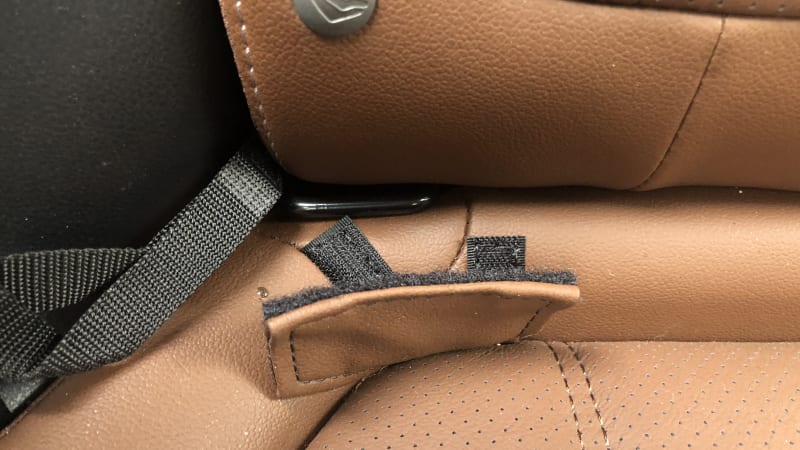
As for the number of lower anchors, each car has two for each outboard seat. The Forester and CR-V each have a single additional lower anchor for the center seat, and can borrow the other anchor from a neighboring seat. The CX-5 and RAV4 don’t have dedicated center anchors, but both have the ability to borrow lower anchors from outboard seats to secure a center car seat using the LATCH system. Most cars do not offer this capability. A single anchor cannot be used simultaneously by two seats, but, of course, you can always use the seatbelt to secure seats next to one another where the LATCH anchors won’t suffice.
For the top anchors, they’re on the back of each seat in the Mazda, Subaru and Toyota, making it easiest to access them from the rear cargo area. The center one is higher than the others in the Mazda, which doesn’t really make a difference unless you’re trying to reach it from the second row, in which case it’s easier to access. Oddly, the Honda’s top anchor isn’t on the seatback at all, but rather in the ceiling above the cargo area. The Toyota’s are all at the same height about halfway down the seatback, as are the Forester’s.
Interestingly, this RAV4, being the Adventure trim, had a rubber cargo mat covering the anchors, so one would either have to un-Velcro the mat to attach the tether, or actually cut out patches of the rubber to expose them. The other testers either had no such cargo area protection, or, as with the Forester, the protection on the seatback already had cutouts to expose the tether anchors. RAV4 trims besides the Adventure or TRD Off-Road also wouldn’t have protectors to deal with. I’m not taking the cargo mat into account for my overall ranking, but thought it was worth noting.
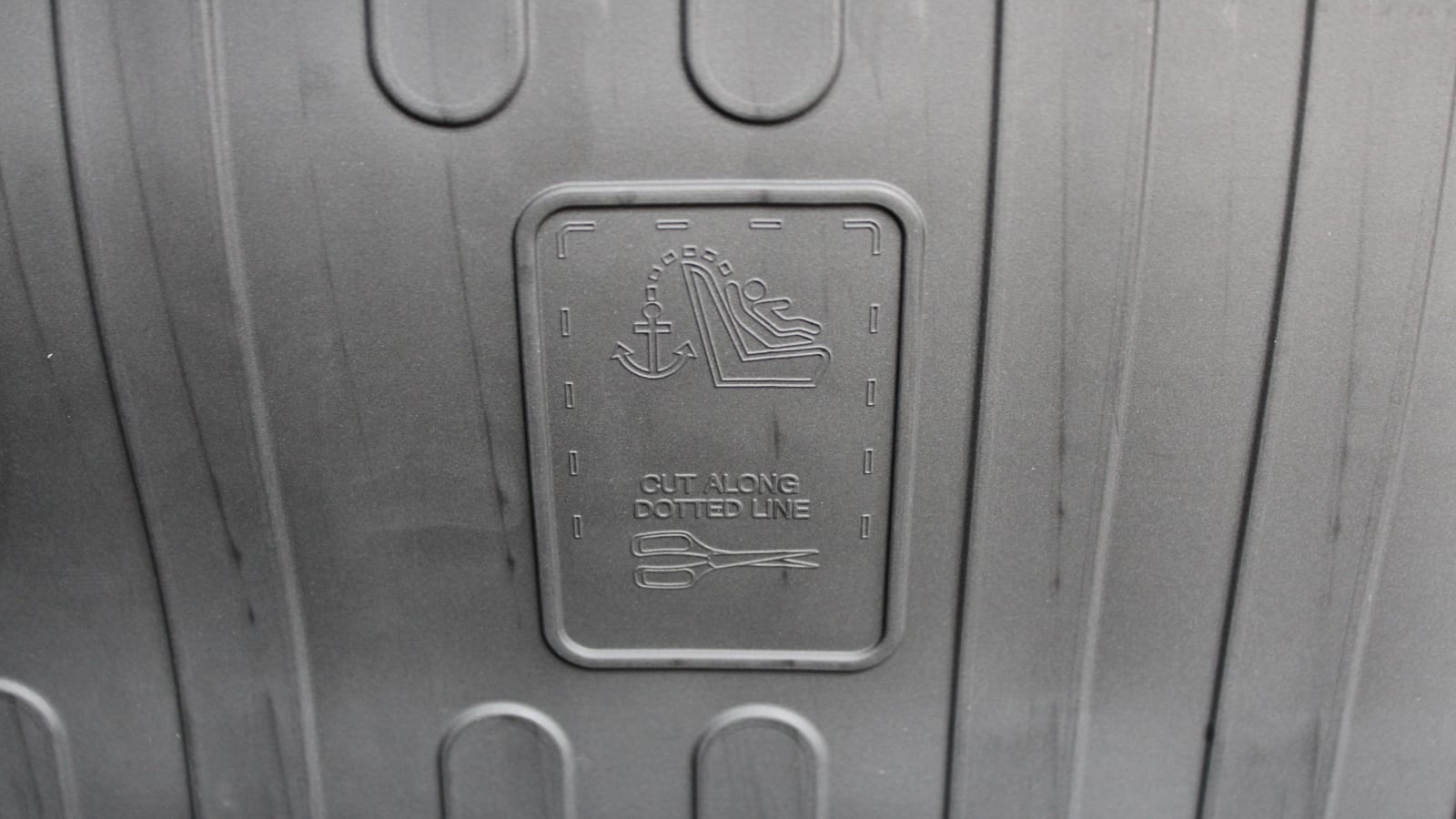
So after everything is said and done, the Honda CR-V would be the car seat champ here if it wasn’t for the scenario of putting a front-facing seat in the center position. As such, I have to give the glory to the Subaru, which offers easy access to all anchors, has doors that open wide for easy installation, and provides ample legroom both for the child and the adult sitting in front of them. After them, the RAV4 just sneaks past the Mazda CX-5. While it’s easier to install the seats in the Mazda, living with them once they’re in place is just a touch better in the RAV4. If you swap seats in and out of your car often, though, you’ll definitely prefer the Mazda to the Toyota.
Related video:
